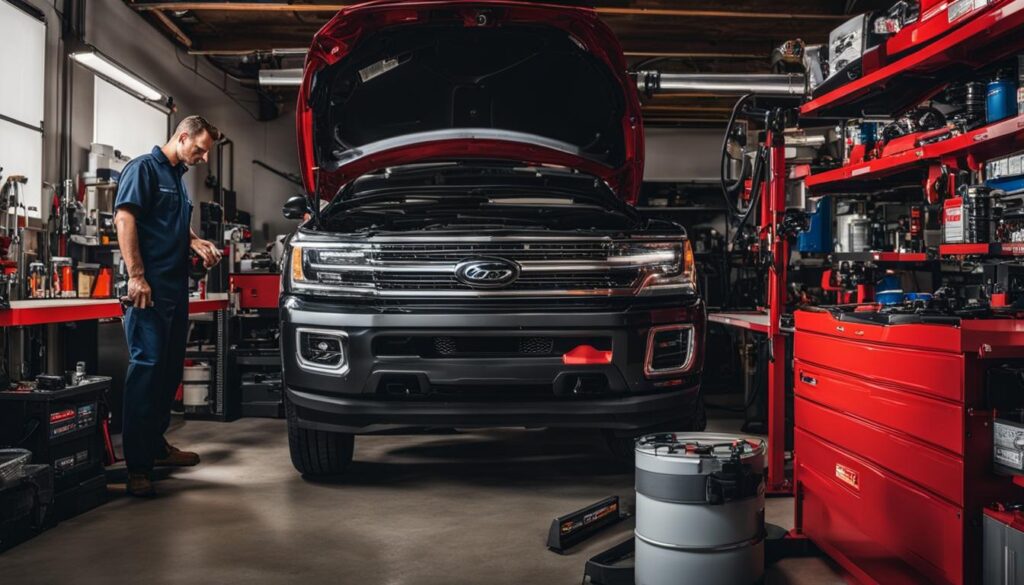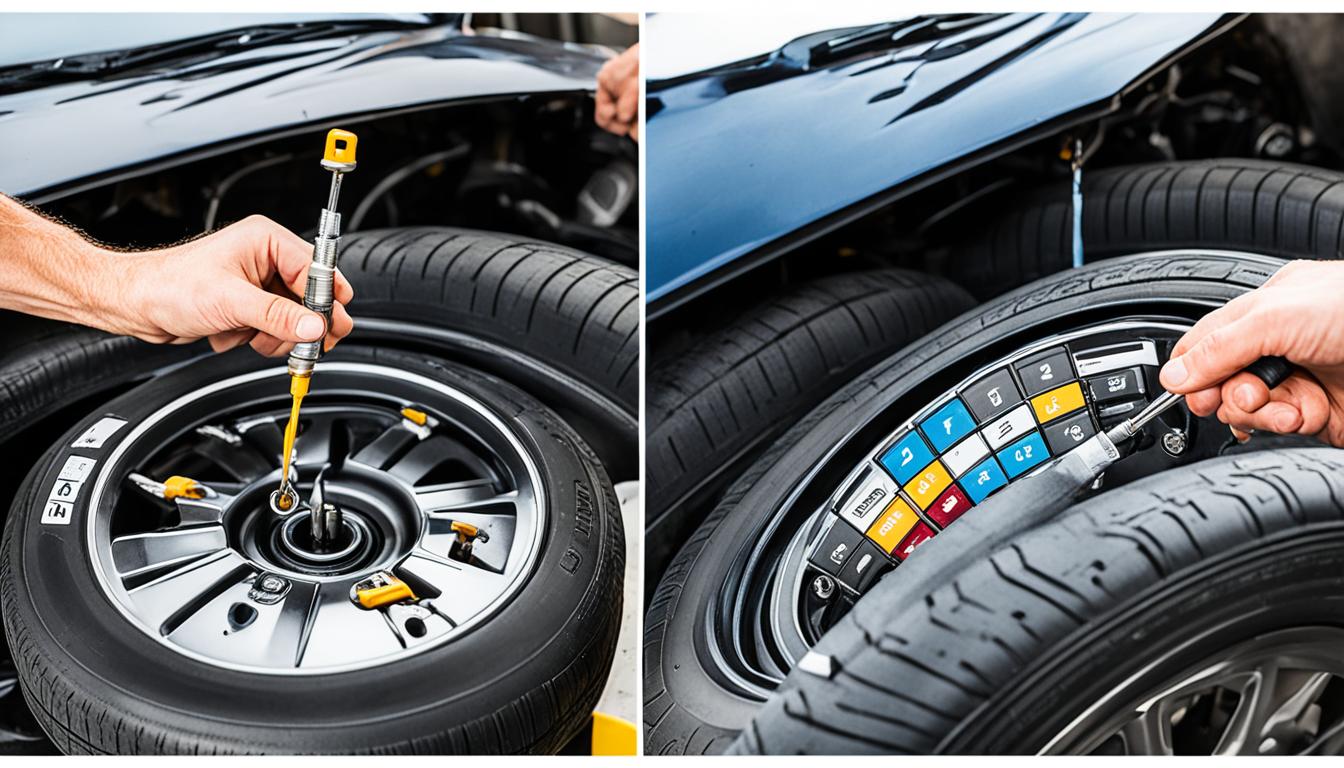Being a car owner can be both thrilling and daunting. While owning a car gives you the freedom to go anywhere you want at any time, it also comes with a responsibility that can’t be neglected. Regular car maintenance is essential to keeping your vehicle healthy and safe on the roads. In this article, I will share with you the top 10 car maintenance tips that every driver should know to keep their car running smoothly and efficiently.
Key Takeaways
- Regularly checking your car’s fluid levels is crucial for its performance and longevity.
- Changing the oil and oil filter on a regular basis keeps the engine running smoothly and cleanly.
- Inspecting the tires helps ensure your safety on the road and extends their lifespan.
- Regularly checking and maintaining the battery can prevent starting problems and ensure the electrical components function correctly.
- Following the recommended maintenance schedule can help prevent costly repairs down the line.
Regularly Check the Fluid Levels
As a car owner, I understand that regularly checking the fluid levels is crucial to maintaining the longevity and efficiency of my vehicle. Your car contains several fluids, including engine oil, coolant, brake fluid, power steering fluid, and transmission fluid. Proper fluid levels are necessary for the smooth operation of your car.
Don’t wait for the warning light to come on before checking your fluid levels. Check them regularly, preferably once a month, especially if you are planning a long trip or notice any potential fluid leaks. Keep your vehicle owner’s manual handy to know the location of the fluid dipsticks under the hood.
| Fluid Type | How to Check | What to Look For |
|---|---|---|
| Engine Oil | After the car has cooled down, remove the oil dipstick, wipe it clean, reinsert it, and then remove it again to check the oil level. | The oil should be at the correct level on the dipstick, and it should be clear or amber in color. |
| Coolant | Locate the coolant reservoir and check the level when the engine is cool. | The coolant level should be between the “minimum” and “maximum” marks on the reservoir, and the liquid should be a bright color. |
| Brake Fluid | Locate the brake fluid reservoir and check the level when the engine is cool. | The brake fluid should be at the proper level and have a clear or light amber color. |
| Power Steering Fluid | Locate the power steering fluid reservoir and check the level when the engine is cool. | The power steering fluid should be at the proper level and have a clear or light amber color. |
| Transmission Fluid | Locate the transmission dipstick, and with the engine running, check the fluid level. | The transmission fluid should be at the proper level and be clear or pinkish in color. |
Remember that fluid levels can decrease over time due to leaks or normal consumption, so if you notice low levels or any abnormalities in color or consistency, it’s better to seek a professional mechanic’s advice to avoid further damage.
Change the Oil and Filter
As a responsible car owner, it is crucial to change the oil and oil filter regularly to maintain the health of your engine. Fresh oil ensures proper lubrication and prevents harmful deposits from building up and damaging your engine over time. The general rule of thumb is to change the oil every 5,000 to 7,500 miles, but it’s always best to consult your car’s manual to determine the recommended intervals.
When changing the oil, it’s essential to replace the oil filter to ensure the oil is clean and free of debris. The oil filter traps dirt and contaminants, preventing them from circulating back into the engine. Neglecting the oil filter can cause it to become clogged and restrict oil flow, leading to engine damage.
Regular maintenance of your oil and oil filter can significantly extend the life of your engine and improve fuel efficiency. By taking care of your car’s oil and oil filter, you can avoid costly repairs and keep your car running smoothly for years to come.
Inspect the Tires
As a driver, it is crucial to inspect your car’s tires regularly. This simple task can help you stay safe on the road and save money in the long run. Here are some essential tips about tire maintenance:
- Check for wear and tear: Inspect your tires for any signs of wear or damage, such as cracks, bulges, or unusual wear patterns. Uneven tread can mean that your car isn’t aligned correctly.
- Proper Inflation: Ensure that your tires are properly inflated, as underinflated tires can decrease fuel efficiency and tire lifespan.
- Regular rotation: Rotate your tires every six months or 6,000 to 8,000 miles to ensure even wear.
- Replace when needed: Don’t delay replacing your tires when needed. Driving with bald or unsafe tires can pose a significant risk.
Regular inspections lead to safer driving. Inspect your tires or have a mechanic do it every so often. This can also improve fuel efficiency and extend tire life.
Check the Brakes
As I mentioned earlier, the braking system is critical for a safe and smooth driving experience. That’s why it’s important to regularly check the brakes to ensure optimal performance. Start by inspecting the brake pads to make sure they are not worn down. If you notice that they are less than 1/4 inch thick, it’s time to replace them. Next, check the rotors for any signs of warping or cracking, and replace them if necessary. Finally, make sure to check the brake fluid levels. Low brake fluid levels could indicate a problem with the braking system and should be addressed immediately.
Don’t forget to test your brakes periodically while driving. If you notice any unusual noises or vibrations when applying the brakes, it’s time to take your car to a professional for a thorough inspection. Your safety on the road depends on the proper functioning of your brake system.

Follow the Manufacturer’s Recommended Maintenance Schedule
Every car manufacturer provides a recommended maintenance schedule that details specific maintenance requirements according to the model and year of your vehicle. Follow the recommended schedule to keep your car running in top condition and prevent costly repairs down the line.
Drive Smoothly and Efficiently
As a responsible car owner, it is important to drive smoothly and efficiently to ensure the longevity of your vehicle and save money on gas expenses. By avoiding sudden accelerations and harsh braking, you can avoid unnecessary strain on your vehicle as well as ensure the safety of yourself and others on the road. Instead, try to maintain a steady speed and plan your driving route ahead of time to avoid rush hour traffic or other congestion.
Practicing fuel-efficient driving techniques can also help improve your car’s efficiency. This means avoiding excessive idling and turning off your engine when waiting for extended periods of time. Additionally, keeping your tires properly inflated and removing excess weight from your car can also help improve fuel economy.
“By practicing fuel-efficient driving techniques, you can help protect both the environment and your pocketbook.”
Conclusion
In conclusion, I hope these 10 essential car maintenance tips have been helpful to you. As a driver, it’s important to take care of your vehicle to ensure that it remains safe, reliable, and efficient for years to come. Regularly checking fluid levels, changing the oil and filter, inspecting the tires and brakes, maintaining the battery, and keeping up with routine maintenance tasks are all key aspects of proper car care.
It’s also important to remember that your driving habits can impact the longevity of your car. By driving smoothly and efficiently, you can reduce wear and tear on your vehicle and improve fuel economy.
Overall, investing a little time and effort into regular car maintenance is a smart investment that can pay off in the long run. So take care of your ride, and it will take care of you!
FAQ
What are some essential car maintenance tips every driver should know?
There are several essential car maintenance tips that every driver should know to ensure the longevity and efficiency of their vehicle. These include regularly checking fluid levels, changing the oil and filter, inspecting the tires, checking the brakes, maintaining the battery, keeping up with routine maintenance, and driving smoothly and efficiently.
Why is it important to regularly check fluid levels?
Regularly checking fluid levels, including engine oil, coolant, brake fluid, power steering fluid, and transmission fluid, is crucial for the smooth operation of your vehicle. Proper fluid levels ensure optimal performance and prevent potential issues that could damage your engine or other components.
How often should I change the oil and oil filter?
It is recommended to change the oil and oil filter every 3,000 to 5,000 miles, or as specified by your vehicle’s manufacturer. Regularly changing the oil helps maintain the health of your engine by ensuring proper lubrication and preventing the buildup of harmful deposits.
How can I inspect my tires properly?
To inspect your tires, look for any signs of wear, such as uneven tread or bulges. Additionally, ensure that the tires are properly inflated according to the recommended tire pressure. Proper tire maintenance improves fuel efficiency, extends tire life, and enhances overall safety on the road.
What should I check when it comes to the brakes?
When checking the brakes, make sure to inspect the brake pads, rotors, and brake fluid levels. Look for any signs of wear or damage, and ensure that the brake system is functioning optimally. Proper brake maintenance is crucial for safe and reliable stopping power.
How can I maintain my car’s battery?
To maintain your car’s battery, regularly inspect the battery terminals for corrosion and clean them if needed. Ensure a secure connection, and have the battery tested periodically to check its health. Taking care of your battery will help avoid unexpected breakdowns and keep your electrical systems running smoothly.
What are some routine maintenance tasks I shouldn’t neglect?
Some routine maintenance tasks that should not be neglected include changing the air filter, checking the spark plugs, and inspecting the belts and hoses. It is important to follow the manufacturer’s recommended maintenance schedule to prevent potential issues and costly repairs down the line.
How can I drive smoothly and efficiently?
Driving smoothly and efficiently can help prolong the life of your car. Avoid sudden accelerations and harsh braking, as these habits can put unnecessary strain on your vehicle. Additionally, practice fuel-efficient driving techniques such as maintaining a steady speed and avoiding excessive idling to improve fuel economy.











